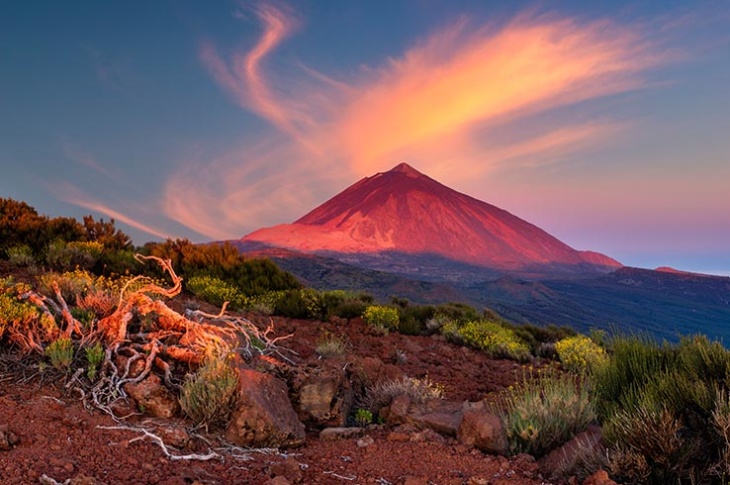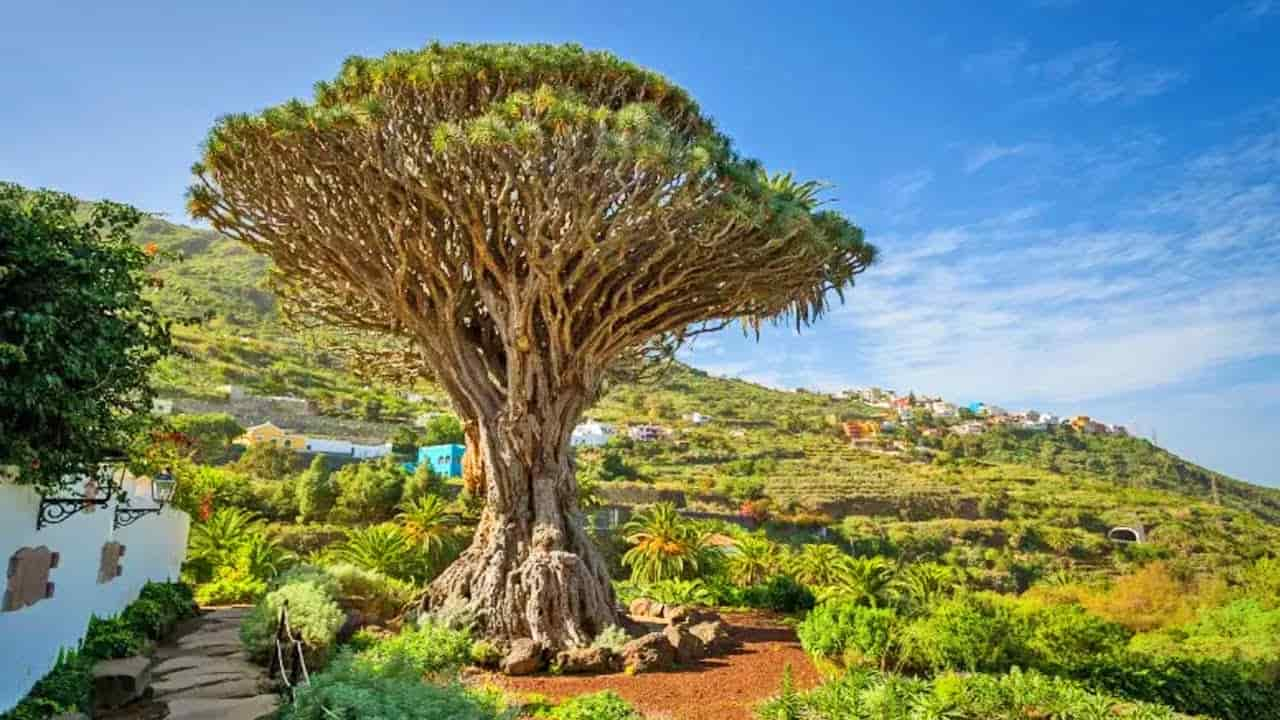Information: This blog is currently available only in Spanish and English.
Tenerife is the largest island of the Canary archipelago. It is characterized by having the highest peak in Spain, El Teide.Tenerife enjoys a subtropical climate with mild and pleasant temperatures throughout the year. The island is famous for the Carnival of Santa Cruz de Tenerife, one of the largest and most famous in the world.
The old town of San Cristóbal de La Laguna, a historic city in Tenerife, is a UNESCO World Heritage Site.
In this post, we will show you the most famous attractions that you cannot miss on this island.
With its 3,718 meters of height, Teide is the highest peak in Spain and the third largest volcanic structure in the world. Its solemn presence dominates the entire island. And on clear days, it is visible from other points of the archipelago.
Teide National Park was declared a UNESCO World Heritage Site in 2007. The elevated peak sits on the ancient caldera of Las Cañadas. We are talking about nearly 19,000 hectares where other volcanic formations like Montaña Blanca and Pico Viejo (or Chahorra) stand out.

The cable car ride (from the base of the volcano, located at 2,356 meters, to La Rambleta, at 3,555 meters in altitude) is a unique experience. You can continue ascending to the peak with a special park permit. But the experience is tough, so it is recommended only for the most prepared hikers.
Loro Parque is one of the world's most prominent zoos and amusement parks, located in Puerto de la Cruz on the island of Tenerife. It is famous for its vast collection of parrots, animal shows, and commitment to conservation and environmental education.
Awarded several years on TripAdvisor as the "Best Zoo in the World," Loro Parque offers the opportunity to get close to its immense parrot family. But also to lions, gorillas, hippos, orcas, sea lions, penguins, flamingos, sharks, alligators, and turtles. All these animals live in spaces that reproduce their natural habitats.
The Millenary Dragon Tree, located in Icod de los Vinos on the island of Tenerife, is one of the most emblematic natural symbols of the Canary Islands. Although it is called "millenary," its actual age is a subject of debate. It is estimated to be between 800 and 1,000 years old, though some theories suggest it could be even older.
The tree has a height of approximately 18 meters and a trunk circumference of about 20 meters at its base.
The dragon tree has been the subject of numerous legends and myths. In the Guanche culture, the original inhabitants of the Canary Islands, the dragon tree was considered sacred. Its resin, called "dragon's blood" due to its reddish color, was believed to have healing and magical properties. In Canarian culture, the Millenary Dragon Tree is a symbol of longevity, strength, and resilience.

One of the most beautiful municipalities in Tenerife, known for its noble, colonial, and university atmosphere. If you visit San Cristóbal de La Laguna, you can walk through the main streets of the city: San Agustín, Obispo Rey Redondo, and Herradores, the most commercial one.
The old town of La Laguna was declared a Cultural Asset and a World Heritage Site by UNESCO in 1999. The 15th and 16th centuries are present when contemplating, among others, the Casa de la Alhóndiga and the Casa de los Capitanes Generales, the Casa del Corregidor, the Casa Osuna, or the simpler Casa Granero.
In La Laguna, you must visit the Cathedral, located in the Plaza de los Remedios, the San Agustín convent, and the Church of La Concepción. And head towards the Plaza del Adelantado for some rest. It is very close to the Town Hall, the municipal market, and the Hermitage of San Miguel Arcángel. It is one of the places where the locals usually gather.
It is also well worth visiting the Museum of History and Anthropology, located in the beautiful Palacio Lercaro, and the Cristino de Vera Foundation. A place where the mysticism that characterizes the work of the Canarian artist seems to have impregnated the atmosphere of the building. There are many squares, streets, gardens, secret, and magical corners to discover in this city.
